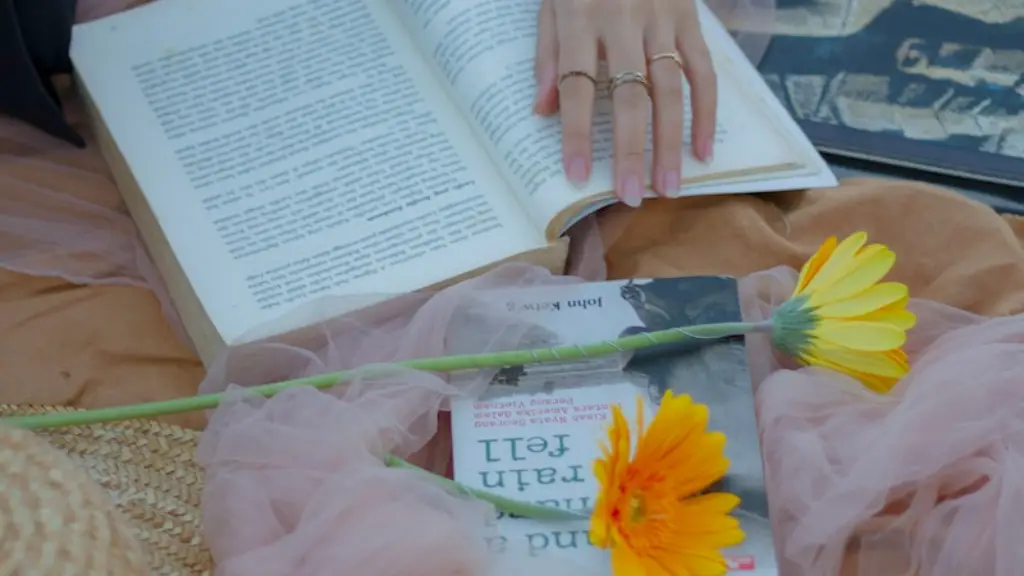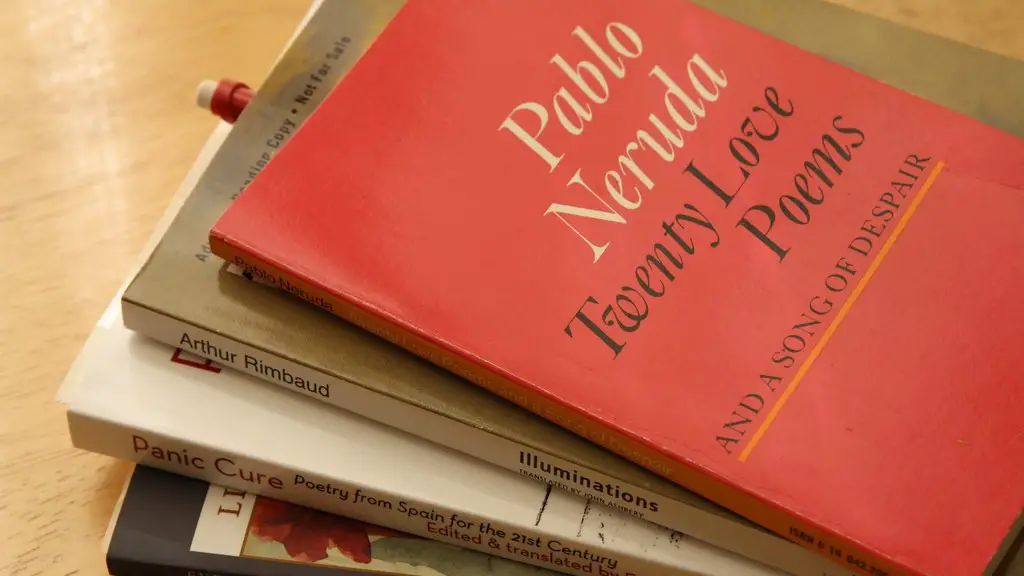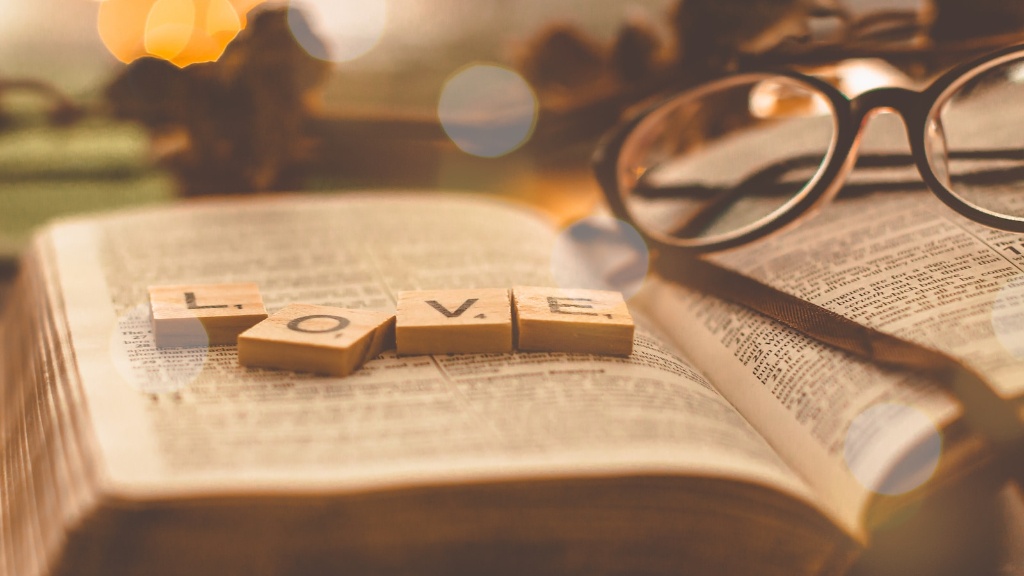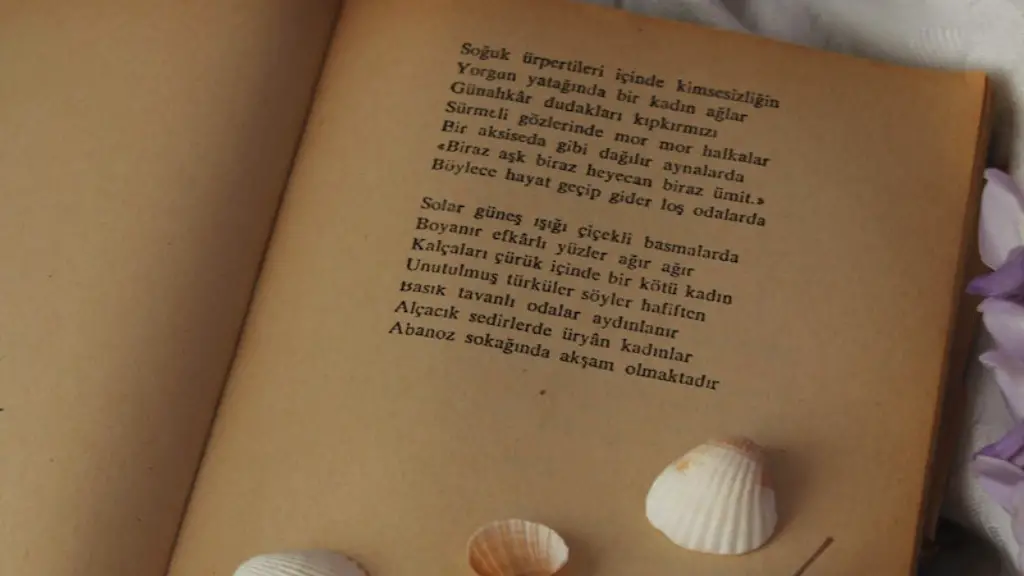History
Oral poetry or oral tradition is a form of art or communication that is delivered orally and uses the spoken word to make a point. It is an ancient art form of storytelling and oratory that have been around for centuries. In the past, oral poets used the spoken word to convey their stories and tales to their community, teach lessons, and even accumulate power. Oral poetry is generally passed from one generation to the next, either directly from parent to child or from bard to apprentice. It is an important part of the literary heritage of many cultures and societies, particularly in the non-Western world.
Types
Oral poetry has many different types and forms, including traditional epics, lyric poetry, dramatic verse, bardic poetry, and prose. Traditional epics are long form stories, often about a hero, their exploits, and the moral and ethical lessons to be learned from the story. Lyric poetry is a short form of natural language poetry that often uses metaphors and imagery to convey its message. It usually has a shorter length than an epic, but it is still a powerful form of communication. Dramatic verse is a form of poetic writing in which stories are dramatically presented, often with the use of personified characters. Bardic poetry is another form of oral poetry that was traditionally used as part of a village’s oral tradition. Lastly, oral prose is similar to traditional writing, except it is delivered orally instead of written down.
Where Can You Find Oral Poetry?
Oral poetry can be found in countless places. In the Western world, many of the great poets, tales, and stories of past cultures have been passed down from oral tradition to oral tradition. In countries like India, China, and other parts of the non-Western world, oral poetry is still a thriving form of art and communication. In many of these countries, bards and poets are commonly seen performing their works in parks, temples, festivals, and other public gatherings.
In addition to traditional performances, oral poetry is also becoming increasingly popular on social media platforms like YouTube, Instagram, and Tik Tok. Many contemporary oral poets use technology and the internet to share their works with a larger audience, and to gain a following among their peers. On these platforms, users can find a myriad of different types of oral poetry, often performed by both amateur and professional poets.
Analysis
Oral poetry is a powerful form of communication, and it has the ability to convey important messages, lessons, and stories to its audience in a unique and emotive way. The use of language, imagery, and metaphor can help to more effectively capture the emotion, message, and meaning of the poet’s words. Furthermore, oral poetry’s public and communal nature makes it an ideal platform to spread important messages and to teach lessons to the people.
One of the major benefits of oral poetry is access. The stories, performances, and works of oral poets are available for all to access, regardless of financial or educational status. In comparison to written literature, oral poetry requires minimal resources, like a voice, to share stories and lessons to everyone.
Significance
Oral poetry is a significantly important art form with both cultural and contemporary relevance. It is an ancient form of art and communication that has been used for centuries to pass down stories, teach lessons, and build up communities. Now, in the digital age, there are countless ways to access and experience the work of oral poets and storytellers. These poets are using their art form to connect with larger audiences, spread messages of hope, and to create a more equitable, educated, and unified world.
Styles
There are many different styles of oral poetry. Each style has its own strengths and weaknesses and is often best suited to a certain occasion or mood. Popular styles of oral poetry include traditional epics, lyric poetry, dramatic verse, bardic poetry, and humorous verse. Traditional epics are long form stories, often with a heroic character and moral lesson. Lyric poetry is usually shorter in length than an epic and it often uses imagery and metaphor to convey its message. Dramatic verse is a form ofpoetry in which stories are dramatized, often with the use of personified characters. Bardic poetry is characterized by its communal roots and it was usually used as part of village religious customs. Lastly, humorous verse is a form of oral poetry that is used to make the audience laugh, usually with the use of jokes and humor.
Technique
The structure and technique of oral poetry is often adapted to its audience and performance setting. Generally, however, a skilled oral poet will use different techniques, such as rhyme, meter, alliteration, and assonance to add more depth and meaning to their works. Additionally, oral poets often use imagery, metaphor, and allegories to further engage and educate their audience. A skilled oral poet should also be able to gauge the audience’s reaction and adjust their performance accordingly.
Influence
Oral poetry has a direct influence on culture, society, and language. By listening to and experiencing the stories, lessons, and works of oral poets, people are exposed to new ideas, perspectives, and morals. Many of the stories or tales may have a direct influence on the culture, language, and behavior of the people within that society. Furthermore, oral poets can also spread messages of hope and promote a sense of unity within their community.
Notable Oral Poets
Throughout history, there has been a myriad of notable oral poets hailing from various different cultures. Homer is one of the most well-known oral poets, known for his works – The Iliad and The Odyssey. Another notable oral poet is Wu Cheng’en, who is best known for his work ‘The Journey to the West’. Other notable oral poets include Mir Ali Muhammad Taqi, Valmiki, Villon, and Yu Xuanji.
Modern Usage
Due to its accessibility and emotional appeal, oral poetry has become increasingly popular among modern audiences. Especially in the digital age, many contemporary poets and storytellers have used technology and the internet to share their works with a larger audience. YouTube, Instagram, and Tik Tok have become popular platforms for both amateur and professional oral poets who are seeking ways to reach a broader audience with their stories and works.
Interpretation
Understood and interpreted properly, oral poetry has the power to foster a greater understanding, appreciation, and connection among its audience. By using imagery, metaphor, symbolism, and storytelling techniques, various messages, perspectives, and lessons can be conveyed to its audience in an emotive and engaging way. Furthermore, oral poetry also provides an invaluable platform for the expression of culture, history, and language.
Performance
Nowadays, performers of oral poetry can be seen in all sorts of venues, from festivals to colleges and conferences. On the other hand, there has also been a long standing practice of practicing oral poetry in private circles, among family and friends. In the past, oral poets often taught apprentices in private lessons or within circles of like minded people. It was also a form of entertainment during village festivals, religious ceremonies, and other public gatherings. Nowadays, many of these traditions remain alive, with oral poets performing or teaching in parks, temples, and other public venues.
Modern Examples
In the modern world, interpretations and examples of oral poetry can be found everywhere. From contemporary poets who use their art form to spread messages of peace and social justice, to ancient bards who use verse to teach morality and ethical lessons, the practice of oral poetry has remained remarkably consistent over the years. The notion of a bard or poet as an esteemed member of a village still applies in many parts of the world, such as Africa and India, where poets often act as counselors, advisors, and teachers to their community. It is also still a popular form of entertainment in societies around the world.
Social Impact
Oral poetry has always played a significant role in the social and cultural life of many societies. In traditional cultures, oral poets are seen as wise advisors, teachers, and leaders who can use their profession to influence the thoughts and actions of their people. This form of oral art has been the steward of culture, history, and language for centuries.It is also an invaluable tool for spreading messages of social justice, unity, and education. Furthermore, it is an important platform for amplifying the voices of minority and marginalized populations, empowering them to speak their truth in an emotive and engaging way.
Preservation
Given its long standing relationship to culture, language, and tradition, it is essential to preserve and protect the practice of oral poetry. Nowadays, there are a number of different initiatives and organizations that seek to preserve and promote the practice of oral poetry. Through educational resources, events, and public performances, these organizations are working to ensure that the voices of poets and storytellers continue to be heard by their audiences.



